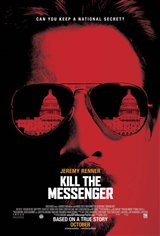Following the U.S. occupation of Nicaragua and the withdrawal of American troops in 1934, command of the National Guard ceded to military officer, Anastasio Somoza Garcia, who implemented a repressive dictatorship and ruled the South American Republic until his assassination in 1956. Power passed to his son, Luis Somoza Debayle, and in turn, to Luis’ brother, Anastasio Somoza DeBayle. For over 43 years, the Somoza family reigned supreme over the Central American Republic of Nicaragua. During this period, the patriarch and each of his two sons enjoyed terms as the country’s President, but in between these stretches of “official” or “legitimate” power, the Somozas remained de facto rulers through absolute and consistent control of the National Guard, which was equipped and trained by the American military.
Throughout the early 1960s, various opposition groups emerged, including a leftist guerilla movement known as the Sandinista National Liberation Front (FSLN). In response to the escalating violent rebellion, the family-run political dynasty repurposed its National Guard to quash dissent using torture and extrajudicial killings, among other methods of fear mongering and intimidation. This civil conflict would mark only the beginning of the Nicaraguan Revolution.
In December 1972, the regime embezzled foreign relief funds intended to counteract the devastation caused by the Managua earthquake. In 1975, martial law was declared, and the National Guard continued to raze rural villages suspected of supporting the rebel groups. Despite outcry against these clear displays of corruption and human rights violations, U.S. President Gerald Ford continued to furnish the Nicaraguan government with American support. It wasn’t until June 1979, when the National Guard killed American journalist Bill Stewart, and the recovered footage of his execution was broadcast across multiple American networks, that President Jimmy Carter decided to cancel military and financial aid for the Nicaraguan government.
Regrouped, revitalized, and retaliating, the FSLN resistance group launched a final assault that ultimately deposed Anastasio Somoza DeBayle in July 1979. Along with remaining members of the National Guard, DeBayle was exiled, and he was eventually assassinated. His death marked the end of the Somoza family dynasty. A temporary and provisional government was installed under the Junta of National Reconstruction. From 1979 to 1990, the FSLN governed Nicaragua with a dedication towards reconstruction and cultural improvement, including literacy and gender equality. However, the peace was short-lived and would prove difficult to maintain.
Opposing the leftist FSLN was the rightist Contras, a collective of various counter-revolutionary rebel groups, some of which included exiled members of the former National Guard. The FSLN enjoyed support from the Soviet Union and Cuba (under Fidel Castro), and joined with the latter to support “Marxist” movements in Latin America. As a result of the divisive national affiliations between American and “Communist” powers, the Nicaraguan Revolution is regarded as a proxy conflict in the Cold War.
Adopting the old adage that the enemy of my enemy is my friend, U.S. President Ronald Reagan openly criticized the FSLN and approved the CIA to fund, arm, and train the Contras, who plagued much of the 1980s with murder, rape, torture, and abject violence that would come to be known as the Contra War.
After the International Court of Justice deemed the United States to have violated international law by supporting the Contras, Congress passed legislation known as the Boland Amendment, thereby prohibiting the American government from providing aid, obviously or surreptitiously, to military efforts in Nicaragua. Despite the Boland Amendment, Reagan began to covertly funnel funding to the Contras through various means. One of these avenues became the subject of intense scrutiny and interest for journalist Gary Webb.
In 1988, Webb began work as a staff writer for the San Jose Mercury News. At this time, and throughout much of the 1980s, the distribution and use of crack cocaine was rampant in Los Angeles, with many considering the trade influx to constitute an epidemic. .
With evidence obtained under the Freedom of Information Act, Webb alleged that the CIA and White House officials were aware of, and even protected, Nicaraguan drug dealers so that the money earned from trafficking could be used to fund the Contras war efforts.
Under the title Dark Alliance, Webb released his findings as a series of articles for which he won the Pulitzer Prize, the highest honor in professional journalism. Webb compiled the articles and published them as a book entitled Kill the Messenger.
The San Jose Mercury News began to distance itself from Webb, his articles, and his accusations, forcing the writer to work out of a satellite office.
Webb’s body was discovered on December 10, 2004 with two bullet wounds in his head. Webb’s body was discovered on December 10, 2004 with two bullet wounds in his head. Although the presiding coroner ruled Webb’s death as a suicide, the circumstances of the journalist’s death are suspicious.
